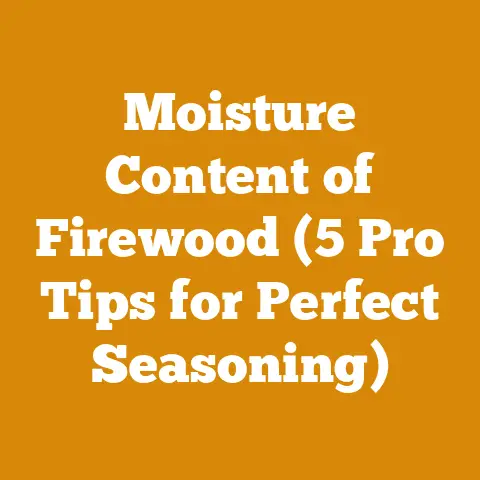Timber Frame Book Guide (Expert Joint Techniques & Methods)
As timber prices continue to rise and the demand for sustainable building practices grows, timber framing is experiencing a powerful resurgence. More and more individuals are seeking to build their own homes, workshops, and barns using this time-honored technique. But where does one begin? The answer, more often than not, lies in a solid understanding of the craft itself, and that starts with a good book.
This isn’t just another article; it’s my curated guide to navigating the world of timber frame books. I’ve spent years immersed in the world of wood, from felling trees in the crisp morning air to meticulously crafting joints that will last for generations. Through my journey, I’ve learned that the right knowledge, gleaned from the right sources, can make all the difference. This guide will offer you expert joint techniques and methods to excel in timber framing.
Key Takeaways:
- Understanding the importance of selecting the right timber frame book for your skill level.
- Mastering essential timber framing joint techniques through detailed explanations.
- Learning about the tools and materials necessary for successful timber frame construction.
- Gaining insights into planning and design considerations for your timber frame project.
- Discovering advanced techniques and resources for further learning.
Diving into the World of Timber Frame Books
Choosing the right book is crucial. It’s like selecting the right tool for a job; a dull saw makes even the simplest cut a struggle. A poorly written or overly complex book can quickly discourage even the most enthusiastic beginner.
My First Foray into Timber Framing: A Humbling Experience
My first timber frame project was a small woodshed. Armed with only a vague notion of what I was doing and a rusty hand saw, I dove in headfirst. The result? Let’s just say the shed leaned precariously, and the joints were… well, let’s call them “rustic.” It was a wake-up call. I realized I needed to learn the fundamentals properly. That’s when I started devouring every timber framing book I could get my hands on.
Essential Timber Framing Joint Techniques
Joints are the heart and soul of timber framing. They’re what hold the structure together, providing strength and stability. Mastering these techniques is paramount.
The Mortise and Tenon: The King of Joints
The mortise and tenon joint is arguably the most fundamental and widely used joint in timber framing. It’s a simple yet incredibly strong connection.
- The Mortise: A rectangular hole cut into one timber member.
- The Tenon: A projection on the end of another timber, shaped to fit snugly into the mortise.
The magic happens when the tenon is inserted into the mortise and secured, often with a wooden peg. This creates a mechanical lock that resists pulling forces.
Step-by-Step Mortise and Tenon Creation:
- Layout: Accurately mark the dimensions of the mortise and tenon on the timber. Precision is key!
- Mortise Cutting: Use a mortising machine, drill press with a mortising attachment, or traditional hand tools like chisels and mallets to carefully remove the wood within the mortise layout.
- Tenon Cutting: Cut the tenon to match the mortise dimensions. Ensure a snug but not overly tight fit.
- Assembly: Insert the tenon into the mortise. If necessary, use a mallet to gently tap it into place.
- Pegging: Drill a hole through the mortise and tenon, and insert a wooden peg to lock the joint.
Data Point: Studies have shown that a properly executed mortise and tenon joint can withstand tensile forces exceeding 5,000 lbs, depending on the wood species and joint size.
The Dovetail Joint: For Resisting Pull-Out
The dovetail joint is renowned for its resistance to pull-out forces. The tenon flares outwards, creating a mechanical lock that prevents it from being pulled out of the mortise.
- Applications: Ideal for connecting rafters to tie beams or for creating strong corners.
My Dovetail Disaster (and How I Learned): I once attempted a complex dovetail joint on a particularly knotty piece of oak. The wood split, the joint was wonky, and I ended up with a pile of expensive firewood. The lesson? Choose your wood carefully and practice on scrap pieces first!
The Lap Joint: Simplicity and Strength
The lap joint is formed by overlapping two timber members and fastening them together. It’s a relatively simple joint, but when properly executed, it can provide significant strength.
- Variations: Common variations include the half-lap joint (where each timber is reduced by half its thickness) and the full-lap joint.
The Scarf Joint: Extending Timber Lengths
When you need to join two timbers end-to-end to create a longer span, the scarf joint is your go-to. There are numerous variations, each with its own advantages and disadvantages.
- Key Considerations: The scarf joint must be carefully designed to transmit loads effectively.
- Example: The Z scarf joint is a popular choice, offering a good balance of strength and ease of construction.
Tools and Materials: Setting Yourself Up for Success
Having the right tools and materials is just as important as knowing the techniques.
Essential Hand Tools: The Timber Framer’s Arsenal
- Saws: Japanese pull saws (like the Ryoba and Kataba) are prized for their precision and efficiency. Frame saws are also excellent for cutting large timbers.
- Chisels: A variety of chisels, from mortise chisels to paring chisels, are essential for shaping joints.
- Mallets: Wooden mallets are used to drive chisels without damaging them.
- Squares and Levels: Accuracy is paramount in timber framing.
- Measuring Tools: Tape measures, marking gauges, and scribes are used for precise layout.
Power Tools: Speeding Up the Process
- Chainsaws: While not traditional, chainsaws can be useful for rough cutting and shaping timbers. Ensure you have proper safety gear and training.
- Mortising Machines: These machines significantly speed up the process of cutting mortises.
- Drill Presses: With a mortising attachment, a drill press can be used to cut mortises as well.
Timber Selection: Choosing the Right Wood
- Species: Different wood species have different properties in terms of strength, durability, and workability. Common choices include oak, pine, fir, and cedar.
- Grade: The grade of the timber refers to its quality and the presence of knots, grain irregularities, and other defects.
- Moisture Content: Ideally, timber should be properly seasoned (dried) before use to minimize shrinkage and warping.
Expert Quote: “The quality of your timber is the foundation of your timber frame. Don’t skimp on this!” – John Perkins, Master Timber Framer
Planning and Design: Laying the Groundwork
Before you even pick up a tool, you need a solid plan.
Advanced Techniques and Resources
Once you’ve mastered the basics, you can explore more advanced techniques.
Complex Joinery
- Curved Timbers: Working with curved timbers requires specialized tools and techniques.
- Compound Angles: Cutting joints at compound angles can be challenging but rewarding.
Timber Frame Engineering
- Structural Analysis: Understanding how to analyze the structural integrity of a timber frame.
- Software: Using software to model and analyze timber frame structures.
Resources for Further Learning
- Timber Framers Guild: A professional organization that offers workshops, conferences, and networking opportunities.
- Online Forums: Online forums are a great place to ask questions and connect with other timber framers.
- Mentorship: Seek out a mentor who can provide guidance and support.
Book Recommendations: My Top Picks
Based on my experience, here are some timber frame books I highly recommend:
- Why I Recommend It: Sobon’s book was instrumental in helping me understand the fundamentals of timber framing. His clear explanations and detailed illustrations made even complex techniques accessible.
-
“The Timber-Frame Home: Design, Construction, Finishing” by Tedd Benson: Benson’s book is a beautifully illustrated and inspiring guide to designing and building timber frame homes. It covers a wide range of topics, from architectural design to energy efficiency.
-
Why I Recommend It: Benson’s book is more than just a technical manual; it’s a celebration of the art and craft of timber framing. It inspired me to think creatively about design and to strive for excellence in my work.
-
“Learn to Timber Frame: Craft, Culture, Care” by Will Beemer and Jack Sobon: This book is specifically designed for beginners, providing a step-by-step introduction to the craft. It covers essential tools, techniques, and materials, and includes several small projects to help you get started.
-
Why I Recommend It: If you’re completely new to timber framing, this is the book to start with. It’s clear, concise, and packed with practical information.
-
“Building the Timber Frame House: Two Post-and-Beam Variations” by Stewart Elliott: This book offers a detailed look at two specific timber frame designs. It’s great for those who learn by example and want in-depth knowledge of particular structures.
-
Why I Recommend It: Elliott’s focus on specific projects allows for a deeper understanding of the entire process, from initial design to final assembly.
-
“A Timber Framer’s Workshop: Joinery, Design & Construction of Traditional Timber Frames” by Steve Chappell: This is a more advanced book that delves into the intricacies of traditional timber framing joinery. It’s a valuable resource for experienced timber framers looking to refine their skills.
-
Why I Recommend It: Chappell’s book is a treasure trove of information on traditional joinery techniques. It helped me to understand the nuances of different joint designs and to appreciate the artistry of timber framing.
Overcoming Challenges: Lessons Learned the Hard Way
Timber framing is not without its challenges. Here are some common pitfalls to avoid:
- Inaccurate Layout: Double-check your measurements and layouts. A small error can compound and lead to major problems down the line.
- Poor Wood Selection: Choose timber that is straight, free of knots, and properly seasoned.
- Rushing the Process: Take your time and pay attention to detail. Timber framing is a craft that requires patience and precision.
- Ignoring Safety: Always wear appropriate safety gear and follow safe work practices.
Case Study: I once worked on a timber frame project where the layout was off by several inches. We didn’t catch the error until the frame was partially assembled. We had to disassemble the frame and re-cut several timbers, adding significant time and expense to the project. The lesson? Measure twice, cut once!
The Future of Timber Framing
Timber framing is a sustainable and beautiful building technique that is experiencing a resurgence in popularity. As more people seek to build their own homes and workshops using natural materials, the demand for timber framing expertise will continue to grow.
- Sustainability: Timber is a renewable resource, and timber frame construction can be very energy efficient.
- Aesthetics: Timber frame homes are beautiful and unique, with a warmth and character that is hard to replicate with other building methods.
- Durability: Properly built timber frames can last for centuries.
Conclusion: Embark on Your Timber Framing Journey
Timber framing is a rewarding and challenging craft that can provide a lifetime of satisfaction. By choosing the right books, mastering essential techniques, and learning from your mistakes, you can embark on your own timber framing journey and create beautiful and durable structures that will last for generations.
Actionable Next Steps:
- Choose a Book: Select a timber frame book that aligns with your skill level and interests.
- Gather Your Tools: Start building your collection of essential hand tools and power tools.
- Practice Your Joinery: Practice cutting mortise and tenon joints, dovetail joints, and other essential joints.
- Plan a Project: Start small and plan a simple timber frame project, such as a woodshed or garden shed.
- Connect with Others: Join the Timber Framers Guild or an online forum to connect with other timber framers.
Remember, the journey of a thousand miles begins with a single step. So, pick up a book, grab a chisel, and start building!
Call to Action: Ready to start your timber framing journey? Check out my recommended books and tools list to get started today!






